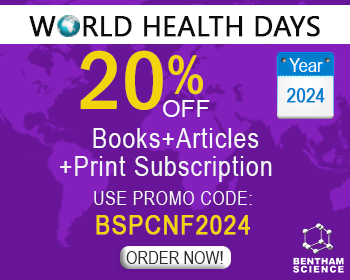Abstract
Background: Particulate matter directly emitted into the air by sources such as combustion processes and windblown dust, or formed in the atmosphere by transformation of emitted gases are the major contributors to air pollution that triggers a diverse array of human pathologies including lung cancer. The mortality in lung cancer is usually high as the disease is not symptomatic at its early treatable stage. Moreover, available methods for screening are costly and mainly rely on imaging techniques which lack sufficient sensitivity and specificity. Despite progress in the identification of biomarkers, gene mutation based approaches still face formidable challenges as the disease evolves from a complex interplay between environment and host. Therefore, identification of an epigenomic signature might be useful for early diagnosis with the potential to reduce the environmental-associated disease burden.
Objective: The review discusses the utility of epigenomic signature in identification and management of the environmental-associated lung cancers.
Conclusion: Non-invasive 'liquid biopsy' based epigenomic screening has recently emerged as a methodology which has potential to characterize tumor heterogeneity at initial stages. Epigenetic signatures (methylated DNA, miRNA, and post transcriptionally modified histones) known to reflect the vital cellular changes, circulate at higher levels in the individuals with lung cancer. These circulating biological entities are reported to be closely associated with the clinical outcome of lung cancer patients and thus strongly stand as the probable candidate to identify disease at an early stage and monitor treatment response, thereby, benefiting patients and improving their lives. However, for effective implementation of the strategy as “point-of-care” test for screening population-at-risk will require exhaustive clinical validation.
Keywords: Circulating DNA, nucleosomes, DNA methylation, histone modifications, miRNA, epigenetic biomarkers.




























